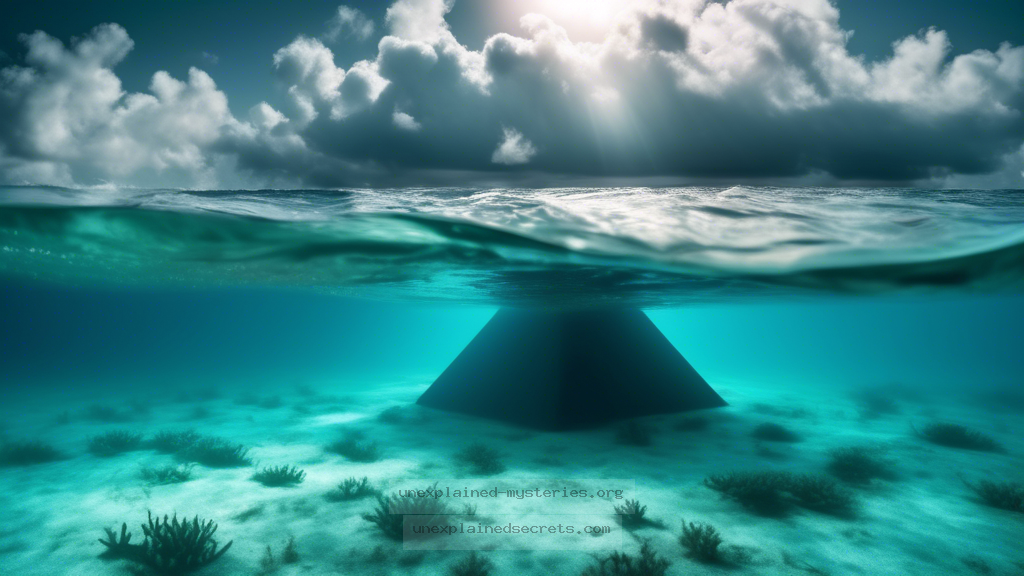What Secrets Lie Beneath the Waves of the Bermuda Triangle?
What Secrets Lie Beneath the Waves of the Bermuda Triangle?
The Bermuda Triangle, a region bounded by Miami, Bermuda, and Puerto Rico, has long captivated both the public imagination and scientific inquiry due to its history of mysterious disappearances of ships and aircraft. But what secrets lie beneath its azure waves? This question matters because understanding the phenomena associated with the Bermuda Triangle could reveal not only the truth about its enigmatic reputation but also the broader implications for maritime and aviation safety. As we delve into this topic, we will explore historical accounts, core theories, alternative perspectives, and ongoing research that tries to unravel the mysteries of this infamous area.
Historical Context: A Legacy of Disappearance
The lore of the Bermuda Triangle began to take shape in the mid-20th century, although reports of odd occurrences in the area date back centuries. One of the first recorded incidents was the disappearance of the USS Cyclops in 1918, a Navy cargo ship that vanished without a trace with 309 men and cargo aboard. This event set the stage for a series of vanishings, including Flight 19, a squadron of five TBM Avenger torpedo bombers that disappeared during a training flight in December 1945. These incidents, combined with sensationalized media reports, forged the Bermuda Triangle’s identity as a hotspot for the unexplained.
Core Concepts: Theories Surrounding the Bermuda Triangle
Several theories have been proposed to explain the mysterious happenings in the Bermuda Triangle. These range from natural phenomena to more speculative ideas:
- Environmental Factors: The Gulf Stream, a powerful ocean current, can quickly erase any evidence of a disaster. Strong underwater currents and underwater topography could also contribute to the rapid sinking of vessels.
- Human Error: Many accidents in the Bermuda Triangle can be attributed to navigational errors, poor weather conditions, and inexperienced pilots.
- Geological Activity: Some researchers suggest that underwater methane hydrates could erupt and cause vessels to lose buoyancy and sink.
- Paranormal Explanations: Theories involving extraterrestrial involvement or time warps have emerged, although these lack scientific backing.
Practical Implications: Real-World Examples of Disappearances
One of the most famous cases tied to the Bermuda Triangle is that of Flight 19. During a training mission in December 1945, five bombers took off from Fort Lauderdale, Florida. The flight’s leader, Lt. Charles Taylor, reported that they were lost and eventually disappeared. A rescue plane sent to find them also vanished. This incident was a catalyst for the Bermuda Triangle legend, and the loss of the Avenger bombers remains one of the most discussed mysteries of the area.
Another notable case is the disappearance of the cargo ship SS Marine Sulphur Queen in 1963, which vanished with 39 crew members aboard. The ship was last reported near the Florida Keys, and its wreckage was never found despite extensive searches. These cases highlight not only the mysterious nature of the Bermuda Triangle but also the tragic human impact of such disappearances.
Alternative Perspectives: Debunking the Myths
While the mystique surrounding the Bermuda Triangle is compelling, several researchers aim to demystify the area. For example, a study published in the journal “Nature” found that the number of incidents in the Bermuda Triangle is statistically comparable to other heavily traveled regions of the world. This suggests that the Triangle is not uniquely dangerous but rather a product of human error, natural phenomena, and the high volume of traffic.
Additionally, many of the supposed disappearances have been exaggerated or misreported. Investigators have uncovered evidence that many ships and planes attributed to the Bermuda Triangle were found to have sunk or crashed in other areas entirely, often due to common maritime hazards.
Common Misconceptions: What You May Not Know
One common misconception is the belief that the Bermuda Triangle has a higher rate of incidents than other regions. In fact, many maritime experts argue that the area is no more perilous than any other stretch of ocean. Additionally, many stories surrounding the Triangle have been sensationalized or fabricated over the years, contributing to its enigmatic reputation.
Another misconception is that all disappearances are unexplained. Many incidents have been attributed to natural causes, such as storms or human error, but these details are often overshadowed by the allure of the unknown. This can create a false narrative that the Bermuda Triangle is a place where the ordinary laws of nature do not apply.
Best Practices for Investigation or Study
For those interested in studying the Bermuda Triangle, it’s important to approach the topic with a critical mindset. Here are some best practices to consider:
- Research Thoroughly: Delve into credible sources and peer-reviewed studies rather than sensationalized articles.
- Analyze Data: Look at statistical data regarding incidents in the Bermuda Triangle compared to other regions.
- Understand Weather Patterns: Familiarize yourself with the weather systems that can impact the area.
- Engage with Experts: Seek insights from maritime historians, meteorologists, and researchers who specialize in oceanic phenomena.
Future Developments: Ongoing Research and Exploration
Research into the Bermuda Triangle continues to evolve, with advancements in technology allowing for better exploration of the underwater landscape. Oceanographers and marine biologists are using sonar mapping and submersibles to study the seabed, which could yield new insights into the geological features that may contribute to the region’s mysteries.
Additionally, as climate change affects ocean currents and weather patterns, researchers are monitoring how these changes may influence maritime safety. The advent of better navigational technology and real-time weather tracking systems may also lead to a decrease in incidents, which could further debunk the myth of the Bermuda Triangle as a dangerous area.
Conclusion: Unraveling the Mysteries of the Bermuda Triangle
The Bermuda Triangle continues to capture our imagination, with its blend of history, mystery, and speculation. Although many incidents can be attributed to human error or natural phenomena, the allure of the unexplained remains strong. By examining the historical context, core theories, and ongoing research, we can better understand the complexities of this infamous region. Ultimately, while the Bermuda Triangle may not be the paranormal hotspot it is often portrayed to be, it serves as a reminder of the vast mysteries our oceans still hold.
As we continue to explore and study the Bermuda Triangle, we may unravel more secrets from beneath its waves, potentially transforming our understanding of this captivating area forever.
Other Articles
Recent Posts
- What Happened to Flight MH370? The Conspiracy Theories That Still Haunt Us
- What Secrets Lurk Within the Walls of the Infamous Trans-Allegheny Lunatic Asylum?
- What Evidence Supports the Existence of Bigfoot in the Pacific Northwest?
- What Happened to the Indus Valley Civilization? Unraveling the Mysteries of Ancient Urban Life
- Can Telepathy Be Scientifically Proven Through Laboratory Evidence?







